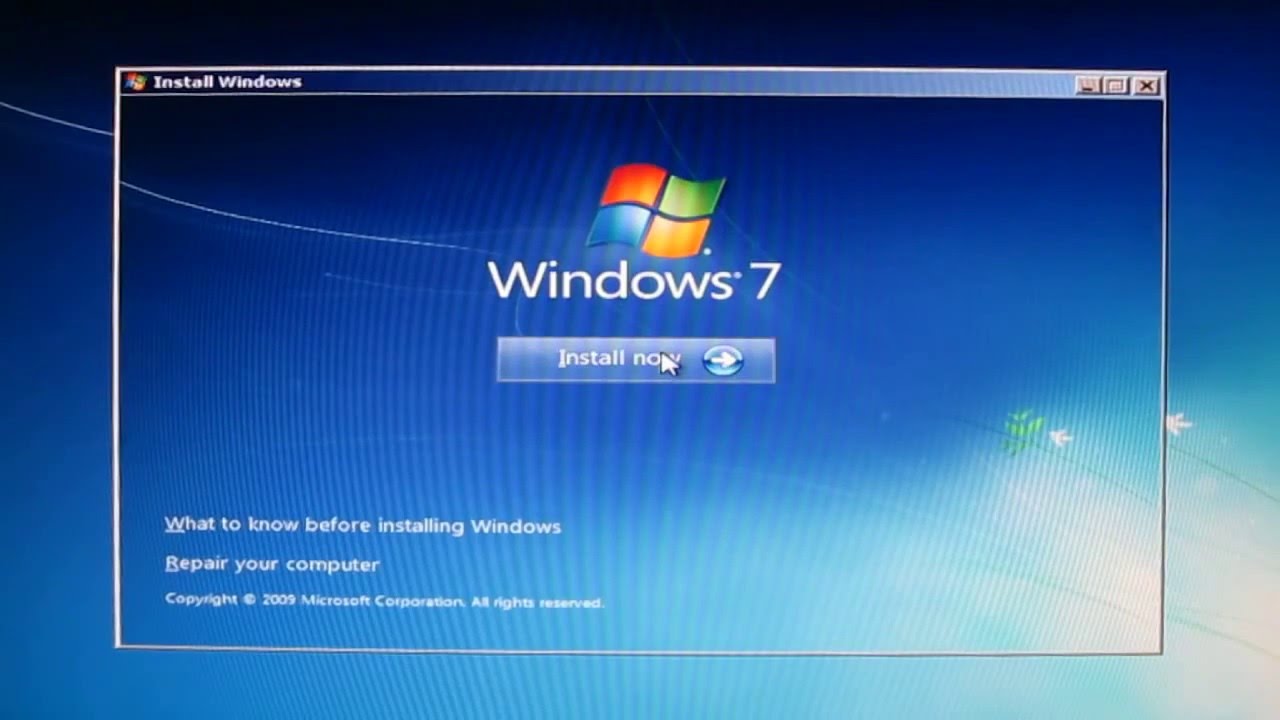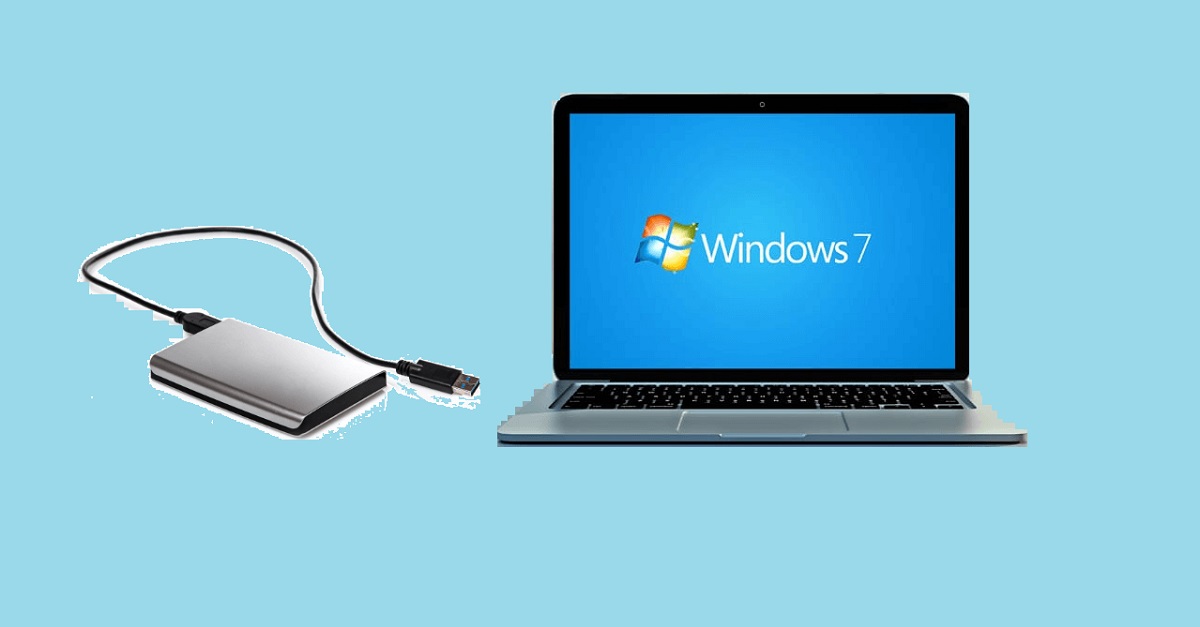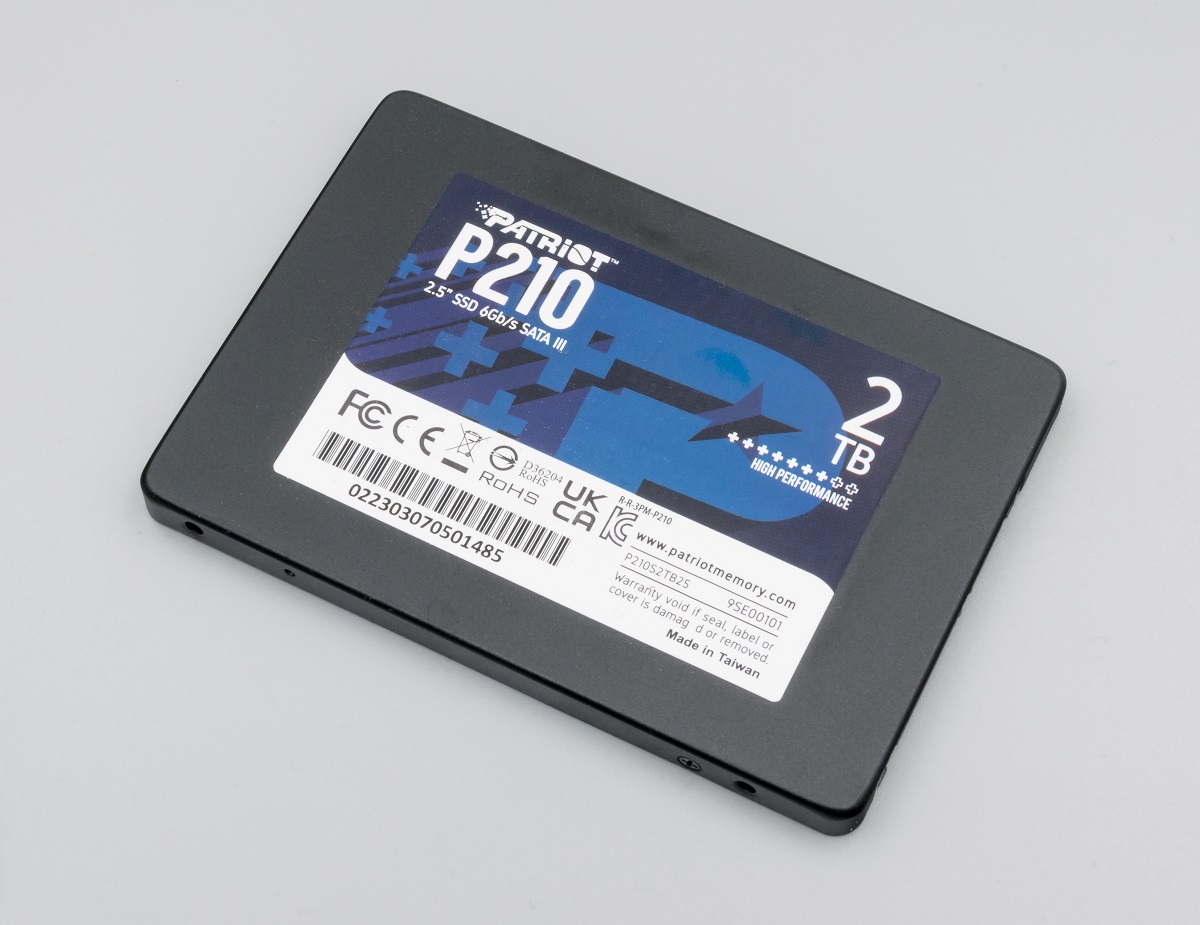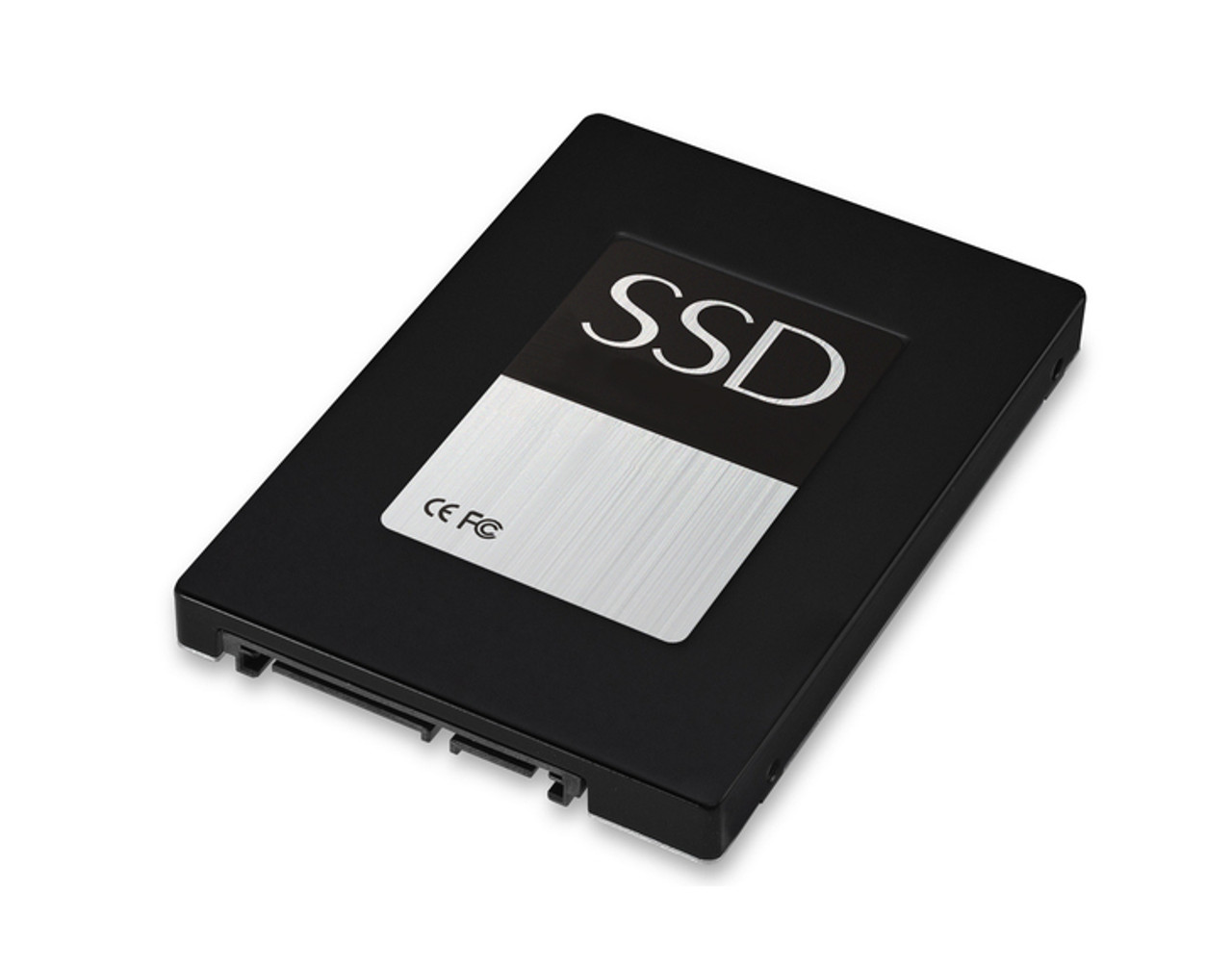Introduction
Welcome to the world of Windows 7! As you embark on your journey to install this popular operating system, one question may pop into your mind: “How much SSD space do I need for Windows 7?” It’s a valid concern, as the amount of storage you allocate can significantly impact your system’s performance and overall user experience.
Understanding the space requirements for Windows 7 is crucial for making informed decisions about your storage needs. In this article, we will dive into the basics of Windows 7, explore the minimum system requirements, and discuss the factors you should consider when determining the amount of SSD space to allocate for the installation. We will also provide recommendations to help you make an informed decision.
Windows 7 is a widely recognized and reliable operating system that offers a user-friendly interface and robust features. Whether you are upgrading from an older version of Windows or installing it for the first time, ensuring that you have enough SSD space will contribute to a smooth and efficient computing experience.
Before we delve into the specifics, it’s essential to understand the basic functions and components of Windows 7. By gaining a fundamental understanding of how the operating system works, you will be better equipped to make decisions that align with your needs and preferences.
In the next section, we will explore the minimum system requirements for Windows 7 that Microsoft recommends. Knowing these requirements will serve as a starting point in determining the SSD space you need for your installation.
Understanding the Basics
Before diving into the details of SSD space requirements for Windows 7, it’s important to have a basic understanding of how the operating system functions. Windows 7 is designed to provide a user-friendly and versatile computing experience, catering to the needs of both casual users and professionals.
Windows 7 operates as a graphical user interface (GUI) system, allowing users to interact with the computer through a visual interface. It supports a wide range of applications and software, making it suitable for various tasks, including web browsing, multimedia playback, productivity, and gaming.
One of the key aspects that differentiate Windows 7 from its predecessors is its enhanced stability and performance. The operating system incorporates various optimizations and improvements that deliver a smoother and more efficient user experience.
In terms of hardware compatibility, Windows 7 is designed to work with a vast range of devices, ensuring that users can seamlessly connect peripherals, such as printers, scanners, and external storage devices, enhance their productivity, and enjoy a diverse computing experience.
Another crucial aspect to consider is the hardware requirements of Windows 7. For optimal performance, Microsoft recommends that your computer meets the minimum system requirements, which include a 1 gigahertz (GHz) or faster 32-bit (x86) or 64-bit (x64) processor, 1 gigabyte (GB) of RAM for 32-bit or 2 GB for 64-bit, and 16 GB of available disk space for 32-bit or 20 GB for 64-bit installations.
However, it’s worth noting that these minimum requirements may not provide an ideal experience, especially if you intend to use resource-intensive applications or multitask heavily. Therefore, allocating more SSD space can help improve performance and allow for smoother operation of Windows 7.
Now that we have covered the basics of Windows 7, let’s move on to the next section, where we will explore the minimum system requirements in more detail. Understanding these requirements will give us a better idea of the SSD space needed for a smooth and efficient Windows 7 installation.
Minimum System Requirements for Windows 7
To ensure that your Windows 7 installation runs smoothly and efficiently, it’s essential to meet the minimum system requirements recommended by Microsoft. While these requirements provide a baseline for functionality, it’s important to note that for a better user experience, exceeding these minimums is highly recommended.
The minimum processor requirement for Windows 7 is a 1 gigahertz (GHz) or faster 32-bit (x86) or 64-bit (x64) processor. This ensures that your computer can handle the essential processing tasks required by the operating system. However, if you plan on running resource-intensive applications or engaging in complex tasks such as video editing or gaming, a faster processor will provide a smoother overall experience.
In terms of memory (RAM), a minimum of 1 gigabyte (GB) for 32-bit or 2 GB for 64-bit is required. While this might suffice for basic usage, opting for more RAM will enhance multitasking abilities and improve overall system performance. Increasing RAM can also help prevent slowdowns and ensure a more responsive computing experience, especially when working with demanding applications or large files.
Storage space is another critical factor to consider. The minimum disk space requirement for Windows 7 is 16 gigabytes (GB) for 32-bit or 20 GB for 64-bit installations. This is the absolute minimum needed to install and run the operating system. However, it’s important to note that this does not leave much room for additional software, updates, and personal files. Therefore, allocating more SSD space will provide room for growth and ensure a more versatile and efficient computing experience.
Graphics capabilities are also important for an optimal Windows 7 experience. A DirectX 9 graphics device with a Windows Display Driver Model (WDDM) 1.0 or higher driver is required. This ensures compatibility with the graphical aspects of the operating system and allows for smooth and visually appealing transitions, animations, and effects. If you plan on using Windows 7 for gaming or graphic-intensive applications, consider a graphics card that exceeds the minimum requirements for an enhanced visual experience.
Lastly, it’s crucial to ensure that your computer meets the recommended system requirements for peripherals and connectivity. This includes having a DVD-ROM drive to install and run Windows 7 from a physical disc, as well as reliable internet connectivity for updates, online features, and accessing cloud services. Additionally, having sound capabilities is important for multimedia playback and communication purposes.
By meeting these minimum system requirements, you can ensure that your Windows 7 installation will function properly. However, keep in mind that exceeding these requirements will result in a more powerful and responsive system. In the next section, we will explore the factors you should consider when determining the amount of SSD space to allocate for your Windows 7 installation.
Factors to Consider
When determining the amount of SSD space you need for your Windows 7 installation, there are several factors to consider. By carefully evaluating these factors, you can ensure that you allocate enough storage to meet your needs without wasting valuable resources.
1. Usage: Consider how you plan to use your computer. Are you a casual user who primarily performs basic tasks such as web browsing, document editing, and media playback? Or do you engage in resource-intensive activities like gaming, video editing, or running virtual machines? The more demanding your usage, the more SSD space you should allocate.
2. Software and Applications: Take into account the software and applications you intend to install on your Windows 7 system. Some applications, especially those used for multimedia editing or complex simulations, can take up significant space. Factor in the size of these applications when determining your storage needs.
3. Updates and Patches: Windows 7, like any operating system, requires regular updates and patches to address security vulnerabilities and improve performance. These updates can consume additional SSD space over time. Plan for these updates by allocating extra space to ensure that your system remains up to date and secure.
4. Personal Files: Consider the amount of data you will store on your computer, such as photos, videos, music, and documents. Allocate sufficient SSD space to accommodate your personal files, as they can accumulate over time and take up a significant amount of storage.
5. Future Growth: Think about your future needs. While it may be tempting to allocate only the bare minimum SSD space required for your current needs, it’s wise to plan for future growth. Allocating extra space allows room for software updates, additional applications, and expanding personal file storage.
6. Budget: SSD storage can be more expensive compared to traditional hard drives. Consider your budget and weigh it against your storage needs. Balancing your budget with your requirements will help you determine the optimal amount of SSD space for your Windows 7 installation.
By carefully considering these factors, you can determine the appropriate SSD space for your Windows 7 installation. Allocating enough space based on your usage, software requirements, personal files, and future growth will ensure that your system runs smoothly and efficiently. In the next section, we will provide recommendations for the amount of SSD space to allocate for your Windows 7 installation.
Determining Storage Needs
Now that you understand the factors to consider when determining SSD space for your Windows 7 installation, let’s delve into the process of determining your specific storage needs. While the exact amount of space required varies depending on individual factors, we can provide some general guidelines to help you make an informed decision.
First, take into account the minimum system requirements for Windows 7, which dictate a minimum of 16 GB for 32-bit or 20 GB for 64-bit installations. However, keep in mind that these minimums are just enough to run the operating system with minimal software installations.
If you are a casual user who primarily uses your computer for web browsing, document editing, and media consumption, allocating a bit more than the minimum requirements may suffice. A storage allocation of 64 GB or higher should be adequate to accommodate the operating system, essential applications, and personal files.
For power users or gamers who utilize resource-intensive applications, allocating additional SSD space is recommended. Aim for a minimum of 128 GB to 256 GB, depending on your specific needs. This will allow ample room for your operating system, applications, games, and personal files, providing a smooth and responsive computing experience.
Professionals who work with multimedia editing, design software, or virtual machines may require even more storage space. In these cases, consider allocating a minimum of 512 GB or higher, as these applications and files tend to occupy more disk space.
Remember, these recommendations are general guidelines, and individual needs may vary. Assess your specific requirements based on the factors discussed earlier and make an informed decision about the amount of SSD space you need.
Lastly, it’s worth noting that if you have the budget and storage capacity available, opting for a larger SSD can be beneficial. This provides more room for future growth, prevents running out of space too quickly, and allows for smoother system operation as the drive will have more unused space for wear leveling and garbage collection.
Once you have determined your storage needs for your Windows 7 installation, you can move forward with confidence, knowing that you have allocated an appropriate amount of SSD space. In the next section, we will share some tips to help you maximize your SSD space efficiency.
SSD Space Recommendations
When it comes to allocating SSD space for your Windows 7 installation, there are a few recommendations to keep in mind. These suggestions will help you optimize your storage usage and ensure a smooth and efficient computing experience.
1. Allocate more than the minimum: As mentioned earlier, it’s advisable to allocate more than the minimum required SSD space for Windows 7. This allows for the installation of updates, additional software, and personal files without running out of storage quickly.
2. Consider the size of your applications: Take into account the size of the applications you plan to install. Some applications, like video editing software and computer-aided design programs, can take up a considerable amount of space. Factor in the sizes of these applications to ensure you have enough SSD space to accommodate them.
3. Utilize external storage: If you find that your allocated SSD space is filling up quickly, consider utilizing external storage solutions such as external hard drives or cloud storage services. Move less frequently used files and applications to these external storage options to free up space on your SSD.
4. Regularly clean up your SSD: Perform regular cleanup routines on your SSD to remove unnecessary files and temporary data. This can help free up space and optimize performance. Use built-in Windows tools like Disk Cleanup or third-party software designed specifically for SSD maintenance.
5. Monitor and manage your storage: Keep an eye on your SSD space usage regularly. Use the built-in Windows Storage settings or third-party software to monitor your disk space and identify any areas where space can be optimized. Delete unnecessary files, uninstall unused applications, and consider moving large media files to external storage if they are not frequently accessed.
By following these recommendations, you can ensure the efficient use of your allocated SSD space for your Windows 7 installation. Remember to regularly assess your storage needs and make adjustments as necessary to maintain an optimal computing experience.
In the next section, we will conclude our discussion on SSD space for Windows 7 and summarize the key points covered in this article.
Tips for Maximizing SSD Space
When dealing with limited SSD space for your Windows 7 installation, it’s crucial to optimize its usage and make the most of the available storage. Here are some tips to help you maximize your SSD space:
1. Be mindful of your downloads: When downloading files or installing applications, choose your destination folder carefully. Consider selecting a secondary drive or external storage instead of saving everything on your SSD.
2. Move user folders: Windows 7 allows you to move certain user folders, such as Documents, Pictures, Music, and Videos, to a different drive. By relocating these folders to a secondary drive or external storage, you can free up valuable space on your SSD.
3. Utilize cloud storage: Cloud storage services, such as Google Drive, Dropbox, or OneDrive, provide a convenient way to store and access your files without occupying physical space on your SSD. Move files that you don’t frequently use to the cloud to save space.
4. Compress files: Compressing files can be a helpful technique to save SSD space. For files that are rarely accessed or those that don’t require real-time access, consider compressing them using tools like WinRAR or 7-Zip.
5. Disable hibernation: If you don’t use the hibernation feature, disabling it can free up a significant amount of SSD space. Open Command Prompt as an administrator and run the command “powercfg -h off”. This will disable hibernation and remove the hibernation file.
6. Limit system restore points: System Restore points can take up a considerable amount of space on your SSD. You can limit the space allocated for system restore points by going to System Properties > System Protection and adjusting the storage usage. Alternatively, you can disable System Restore for your SSD altogether if you have other backup solutions in place.
7. Regularly clean up temporary files: Windows and various applications generate temporary files that can accumulate over time and take up valuable SSD space. Use the Disk Cleanup tool to remove these temporary files and free up space on your SSD.
By implementing these tips, you can effectively maximize your SSD space and ensure that your Windows 7 installation remains streamlined and efficient. Regular maintenance and being mindful of your storage usage will go a long way in optimizing your SSD space.
Now, let’s bring everything together in the concluding section of our article.
Conclusion
When it comes to determining the SSD space needed for your Windows 7 installation, it’s important to consider multiple factors such as your usage, the size of your applications, and your future growth plans. By allocating more than the minimum requirements, you can ensure a smooth and efficient computing experience.
Understanding the basics of Windows 7, including its functions and minimum system requirements, provides a solid foundation for making informed decisions about your SSD space allocation. By meeting or surpassing these requirements, you can optimize the performance of your operating system.
Considering factors such as your usage patterns, the size of your applications, and future storage needs will help you determine the appropriate amount of SSD space to allocate for your specific requirements. Allocating more space than initially needed allows for growth and prevents running out of storage too quickly.
To maximize your SSD space, you can utilize external storage, regularly clean up temporary files, and be mindful of your downloads and user folders. By following these tips, you can make the most of the available space and optimize your storage usage.
Remember, while these recommendations serve as general guidelines, individual needs may vary. Assess your specific requirements, consider your budget, and make an informed decision about the amount of SSD space to allocate for your Windows 7 installation.
By taking the time to determine and allocate the appropriate SSD space, you can enjoy a smooth, responsive, and efficient Windows 7 experience. Whether you’re a casual user, a power user, or a professional, optimizing your storage usage will contribute to a seamless computing journey.

























